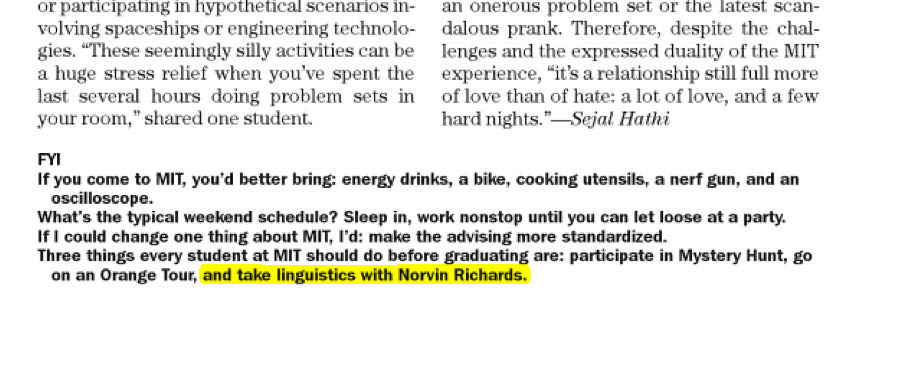Speaker: Steve Piantadosi (Gibson lab)
Title: What is the language of thought?
Time: Tues 3/29, 12pm
Location: 46-3310 (note the change from our usual location)
We present a computational model of learning compositional, structured concepts in a “language of thought.” We show that language of thought models out-perform alternatives such as exemplar models in capturing people’s patterns of generalization in a massive, online, concept-learning experiment. We additionally develop a method for formally evaluating different representation languages using the experimental results. We compare 9 different representation languages for simple boolean concepts, and 12 for languages for concepts that move beyond boolean logic, towards the types of representations necessary for natural language semantics.
